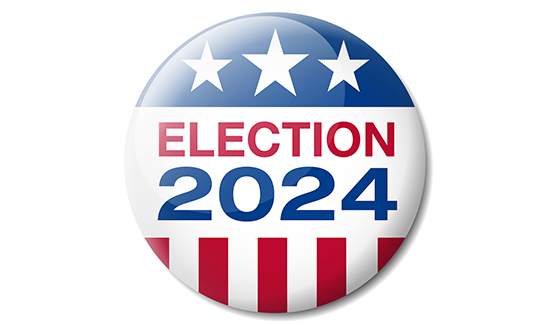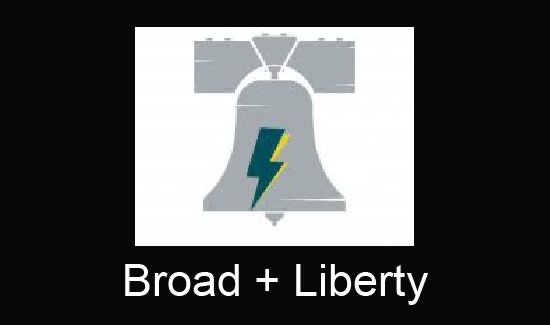Would Reversing Laurel Pipeline Benefit Western PA?
(June 7, 2017)–Summary: A recent request by the owner of the Laurel Pipeline, which brings gasoline and other fuels from east to west across Pennsylvania, to reverse the flow from PA’s western edge eastward to Altoona is being considered by the Pennsylvania Public Utility Commission. Proponents suggest greater domestic supplies from the Midwest would provide a cheaper, more reliable fuel source. Opponents claim it would hurt refineries in the Philadelphia area. A decision is expected to be made by year’s end.
___________________________________________________________________
Most people filling their cars are unaware of the system of pipelines crisscrossing the country that bring gasoline from refineries to their area. In Pennsylvania, the Laurel Pipeline transports gasoline and other fuels from refineries in the Philadelphia area to markets across the southern half of Pennsylvania through Harrisburg, Altoona, Pittsburgh, and on to Midland in Beaver County. Other pipelines supply fuel to the region from the north and west.
Recently the owner of the Laurel Pipeline asked the Pennsylvania Public Utility Commission (PUC) for permission to reverse the flow of gasoline from Midland to Altoona. This reversal would bring gasoline along with diesel, jet fuel, and other products from refineries in the Midwest, rather than from the Philadelphia region, to the western and central Pennsylvania markets. This request has prompted objections from Philadelphia area refiners as well as retailers based in Altoona and Pittsburgh. Concerns of the Philadelphia area refiners are easy to understand. The flow reversal would result in the loss of a major market for their product.
There are seven refineries producing transport fuels in the Eastern part of the country—down from nine in 2010. Five are in the Philadelphia area, with two in Pennsylvania, two in nearby New Jersey, and one in Delaware. There is another in Warren County, Pennsylvania and one in West Virginia. Data from the U.S. Energy Information Agency showed that through July 2016 the seven refineries produced on average 0.53 million barrels of gasoline and 0.32 million barrels of diesel and heating oil per day—just 16 percent of demand for gasoline and 27 percent of demand for diesel and fuel oil in the Northeast. The rest of the demand for fuels in the region is met by supplies from the Gulf Coast via pipeline (Colonial pipeline), tankers, and barges as well as supplies arriving from Canada and overseas.
A further concern of the Philadelphia area refiners is that the reversal of the Laurel Pipeline flow to Altoona will eventually extend into Philadelphia, further shrinking their market. However, the Philadelphia refineries have more than the pipeline to be worried about. As noted in a recent Philadelphia Inquirer article, "While the proposed Laurel Pipe Line reconfiguration represents a setback for Philadelphia refiners, industry analysts and the pipeline operators say it’s not the cause of the Mid-Atlantic refining industry’s ills." The problem? These refiners are apparently not cost competitive with either Midwestern or Gulf Coast refiners. The Inquirer article notes that "Gulf Coast producers, which are tied directly to oilfields, can produce fuel at such a discount to East Coast refiners that it more than covers the 5- to 10-cents per gallon cost of moving the fuel by pipeline…." And that is the real long term nemesis of the Philadelphia refineries.
Given the problems faced by refiners on the East Coast and in the Philadelphia area specifically, it is no wonder they would be concerned about losing access to the central and western Pennsylvania markets.
What about the fuel supplies coming from the Midwest?
According to Morningstar Commodities Research, an independent investment research firm, there are 26 transport fuel refineries in the Midwest with a production capacity of 3.9 million barrels of fuel per day. Unlike refiners in the East, they have increased production by 0.3 million barrels per day since 2010. And whereas East Coast refiners are largely cut off from domestic crude supplies, Midwestern refineries are awash in domestic crude as well as crude from Canada.
Bakken Shale oil from North Dakota, which was once shipped by rail to the East Coast refiners when the international market price of oil was high, has become a great benefit to the Midwestern plants. In 2010, 0.25 million barrels per day of this light crude was produced, and reached 1.26 million barrels per day in December 2014. Production fell to less than one million barrels per day in 2016 as oil prices plunged but is expected to rebound in 2017. New shale crude is also coming to these refineries from Oklahoma, Colorado, and the Utica Shale formation in Ohio. As noted in a Morningstar report, "abundant supplies of inland shale crude…rapidly overwhelmed the existing Midwestern crude distribution system in 2012."
In addition, Canadian crude has been very abundant for Midwestern refiners. Ninety nine percent of Canadian crude is shipped to the U.S. for refining. Seventy seven percent of the Canadian oil is shipped to Midwestern refineries. Imports of Canadian crude have increased from 1.2 million barrels per day in 2010 to 2.4 million in 2016. In short, Midwest refineries are well positioned geographically relative to oil production, now and for the foreseeable future.
As mentioned above, the seven refineries in the East Coast supply just a small fraction of the Northeast’s demand for gasoline, diesel and heating oil. The situation for Midwestern refineries is very different. They supply 87 percent of the Midwest’s demand for transport fuels. Morningstar notes that the demand for transport fuels in the Midwest has been stagnant over the past few years as greater fuel efficiency requirements in autos, coupled with the static population in that region, have led to less fuel consumption and lower demand for refined fuels. While being landlocked in the center of the country has worked to their advantage for crude supplies, it inhibits the ability of Midwest refineries to export fuels overseas. Thus, extending their supply infrastructure further eastward is a benefit to them as well as the region receiving the product.
On its face, the supply of transport fuels from the Midwestern refineries seems to promise far better long term stability than the refineries on the East Coast. So why would the two retailers balk at a more stable supply? While the Laurel Pipeline does bring fuels from the Philadelphia area to the western and central Pennsylvania markets, there are other pipelines bringing fuels from the Midwest to terminals in the Pittsburgh area. As currently configured, these retailers can choose from which area to purchase their fuels and can choose the lower priced source—an option they are reluctant to relinquish. However, other local gasoline distributors presumably have the same choices of pipeline as the retailers who oppose reversal, so post-reversal competiveness should not be an issue. And for the Altoona distributor opposing the reversal, it would still be able to choose East or Midwest supply after the Laurel Pipeline reversal.
The owners of the Laurel Pipeline claim the flow from the East Coast refiners has been drastically cut since 2006 when 100,000 barrels traversed the line. They say the flow at the beginning of 2017 was down about 80 percent to just above 20,000 barrels. Given that East Coast refiners are supplying only a fraction of the transport fuels western and central Pennsylvania markets are using, with the rest provided by pipelines from the North and West, the objections to the flow reversal appear to be of very limited or no merit.
In sum, the PUC’s central issue is how heavily to weigh the long term availability and stability of the supply of domestically produced crude and ample supply of refined products in its decision of whether or not to allow the reversal of flow in the Laurel Pipeline. If the Philadelphia area refineries can eventually improve their competitiveness by a significant margin, there will still be a huge market open to them from eastern Pennsylvania to Maine. Thus, the refinery objections should not be a determining factor in the PUC’s decision. Allowing reversal of the Laurel Pipeline would in effect be forcing East Coast refineries to become more cost competitive. A good thing for everyone in the long run.
Frank Gamrat, Ph.D., Senior Research Associate
Jake Haulk, Ph.D., President
If you wish to support our efforts please consider becoming a donor to the Allegheny Institute.The Allegheny Institute is a 501(c)(3) non-profit organization and all contributions are tax deductible.Please mail your contribution to:
The Allegheny Institute
305 Mt. Lebanon Boulevard
Suite 208
Pittsburgh, PA15234
For more on this topic click here
Link to Allegheny Institute Website
Forward this Brief to a friend
Tel: (412) 440-0079
Fax: (412) 440-0085
Email: [email protected]
________________________________________
Click to view this email in a browser
________________________________________
Allegheny Institute for Public Policy
305 Mt. Lebanon Blvd. Ste #208
Pittsburgh, PA 15234





